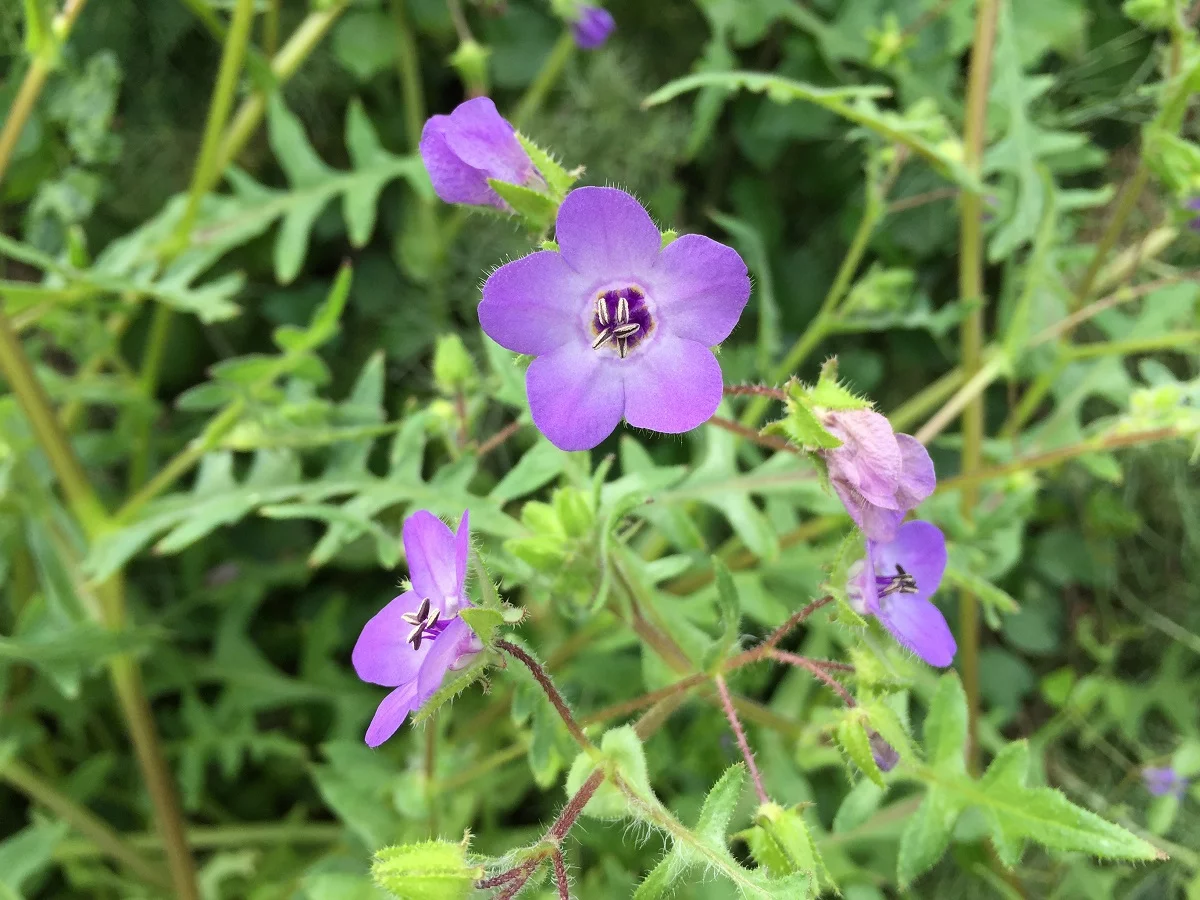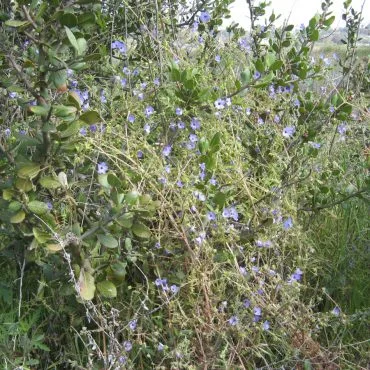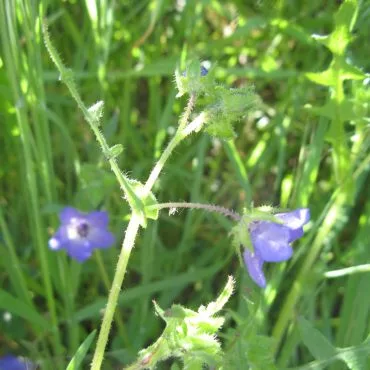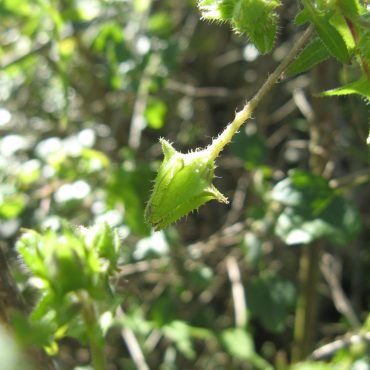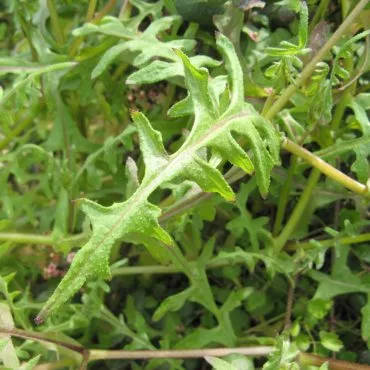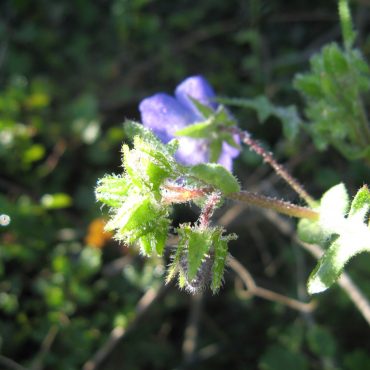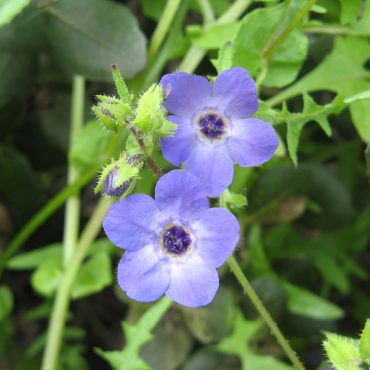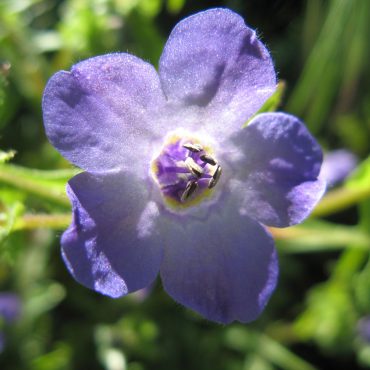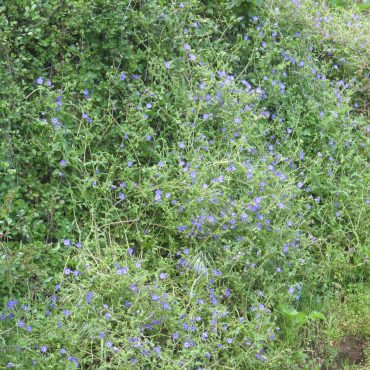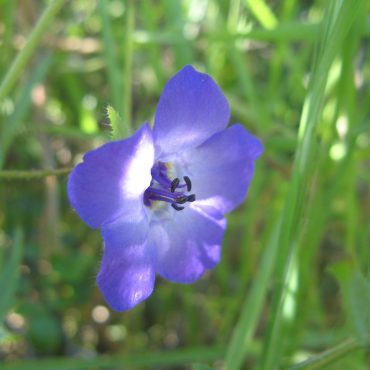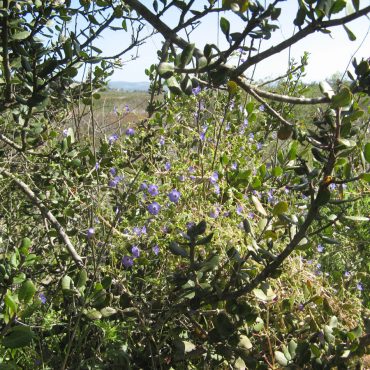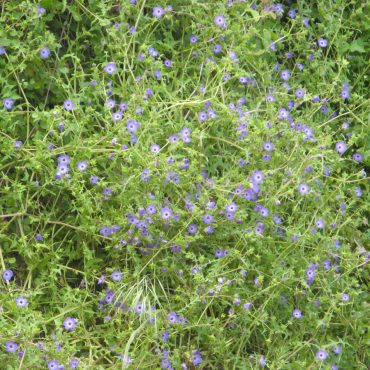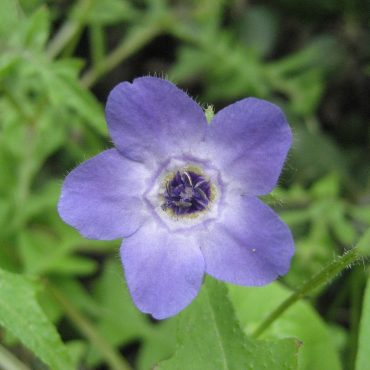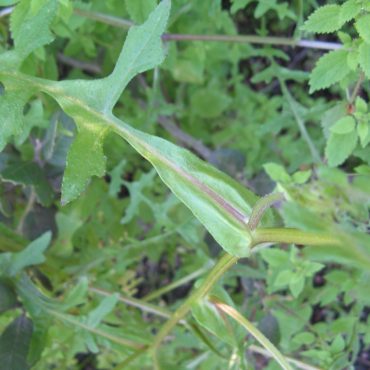Fiesta flower is a trailing, weak-stemmed annual that uses woody shrubs for support. Stems are square and up to about 5 feet (1.5 m) in length. Stems and leaves are provided with small, stiff, downward-directed prickles that give the plant a grabby, sticky feeling.
Leaves are pinnately divided into 5-9 lobes; lobe margins are smooth. Individual lobes often point toward the base of the leaf. The leaf petioles have broad leafy flaps that wrap around the plant stem.
The showy flowers occur in loose clusters, opening one-at-a-time at the top of a coiled stem that gradually unfurls. Flowers are bisexual and radially symmetrical, broadly cup-shaped, usually less than 1 inch (25 mm) wide. Petals are purple to lavender (rarely blue), paler near the base. In the throat of the flower, five small purple scales surround the base of the stamens, closing the throat and giving the flower a dark eye. Stamens have violet filaments and dark purple anthers which protrude from the flower cup and split longitudinally to release pollen. Sepals have small, leafy appendages that curl outward in the gaps between the unfused sepal tips. Peak bloom is March to May.1
There are one to four seeds in two-chambered, subspheroid capsules. Sepals enclose the developing capsule. With the curling appendages, the structure looks a bit like a green lantern.

